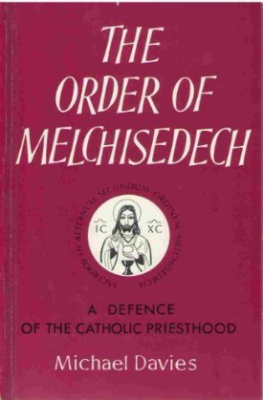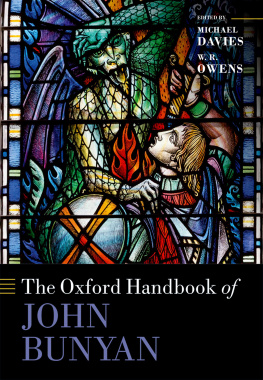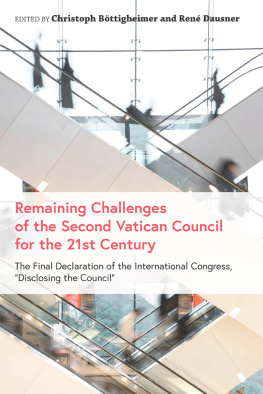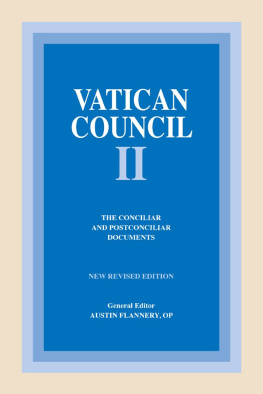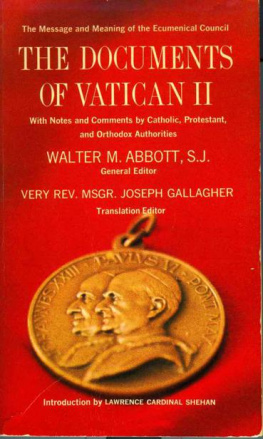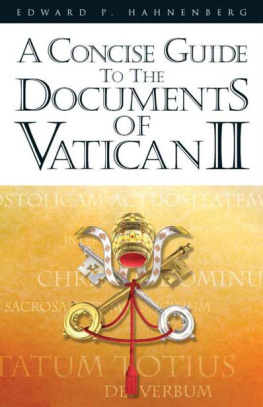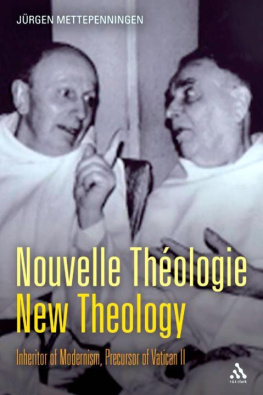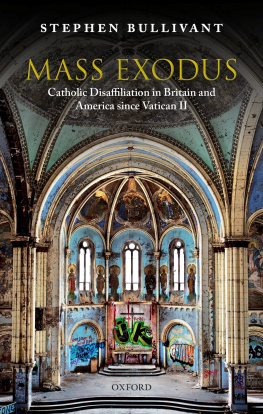Michael Davies - The Catholic Sanctuary: And The Second Vatican Council
Here you can read online Michael Davies - The Catholic Sanctuary: And The Second Vatican Council full text of the book (entire story) in english for free. Download pdf and epub, get meaning, cover and reviews about this ebook. year: 2015, publisher: TAN Books, genre: Religion. Description of the work, (preface) as well as reviews are available. Best literature library LitArk.com created for fans of good reading and offers a wide selection of genres:
Romance novel
Science fiction
Adventure
Detective
Science
History
Home and family
Prose
Art
Politics
Computer
Non-fiction
Religion
Business
Children
Humor
Choose a favorite category and find really read worthwhile books. Enjoy immersion in the world of imagination, feel the emotions of the characters or learn something new for yourself, make an fascinating discovery.

- Book:The Catholic Sanctuary: And The Second Vatican Council
- Author:
- Publisher:TAN Books
- Genre:
- Year:2015
- Rating:4 / 5
- Favourites:Add to favourites
- Your mark:
- 80
- 1
- 2
- 3
- 4
- 5
The Catholic Sanctuary: And The Second Vatican Council: summary, description and annotation
We offer to read an annotation, description, summary or preface (depends on what the author of the book "The Catholic Sanctuary: And The Second Vatican Council" wrote himself). If you haven't found the necessary information about the book — write in the comments, we will try to find it.
The Catholic Sanctuary: And The Second Vatican Council — read online for free the complete book (whole text) full work
Below is the text of the book, divided by pages. System saving the place of the last page read, allows you to conveniently read the book "The Catholic Sanctuary: And The Second Vatican Council" online for free, without having to search again every time where you left off. Put a bookmark, and you can go to the page where you finished reading at any time.
Font size:
Interval:
Bookmark:
THE CATHOLIC SANCTUARY
AND THE SECOND VATICAN COUNCIL
Michael Davies
Copyright 1997 by TAN Books and Publishers, Inc.
All rights reserved. Except for brief excerpts, this booklet may not be reproduced, in whole or in part, without the written permission of the Publisher.
Library of Congress Catalog Card No.: 96-61969
Cover photo: Sanctuary of The Oratory, Brompton Road, London, with permission of the Superior.
TAN BOOKS
Charlotte, North Carolina
1997
SOME OTHER TITLES
By the Same Author
Liturgical RevolutionVol. I:
Cranmer's Godly Order
Liturgical RevolutionVol. II:
Pope John's Council
Liturgical RevolutionVol. III:
Pope Paul's New Mass
The Order of Melchisedech
Newman Against the Liberals (editor)
Communion Under Both Kinds
Open Lesson to a Bishop
The Reign of Christ the King
Partisans of Error
The Roman Rite Destroyed
I Am With You Always
The Tridentine Mass:
The Mass That Will Not Die
A Privilege of the Ordained
Mass Facing the People
The Legal Status of the Tridentine Mass
The Second Vatican Council
and Religious Liberty
Liturgical Shipwreck:
25 Years of the New Mass
A Short History of the Roman Mass
"A real change in the contemporary perception of the purpose of the Mass and the Eucharist will occur only when the table altars are removed and Mass is again celebrated at the high altar; when the purpose of the Mass is again seen as an act of adoration and glorification of God and of offering thanks for His blessings, for our salvation and for the promise of the heavenly life to come, and as the mystical reenactment of the Lord's sacrifice on the cross."
Msgr. Klaus Gamber
The Reform of the
Roman Liturgy (1993), p. 175

The beautiful sanctuary of The Church of the Oratory, London, after all the mandatory post-Vatican II changes have been madethat is, no changes have been made to the pre-conciliar sanctuary.
THE CATHOLIC SANCTUARY
AND THE SECOND VATICAN COUNCIL
I n the Traditional Mass of the Roman Rite the Catholic priest offers Mass in a sacred place, a sanctuary, set apart from the rest of the church for sacrifice, as was the Holy of Holies in the Jewish Temple, to which the celebrant refers explicitly in the silent prayer Aufer a nobis as he ascends to the altar of sacrifice: "Take away from us our iniquities, we beseech Thee, O Lord, that with pure minds we may enter the Holy of Holies." As he recites this prayer the celebrant is filled with the thought of the holiness of God and the awesome nature of the mysteries that he is about to celebrate.
Throughout the centuries the Catholic people have spared no effort and no expense to build sanctuaries which provided a worthy setting for the awesome Sacrifice, sanctuaries which provided a foretaste of the true Holy of Holies, Heaven itself. In the Eastern Churches the faithful are not even permitted to witness the most solemn moment of the liturgy as it takes place behind the ikonostasis. However, in the past three decades tens of thousands of exquisite Catholic sanctuaries have been destroyedin obedience, it is claimed, to the requirements of the Second Vatican Council. Before examining this claim it is necessary to make a brief examination of liturgical development in the Church.
The early Christians assembled for divine worship in the house of one of their number who possessed a large dining room. The reason was, of course, that as a persecuted minority the Christians could erect no public buildings. A number of present-day churches in Rome bear the name of Christians in that locality who had dwellings where Mass was celebrated in the first centuries. Mass was also celebrated in the Roman catacombs on the tombs of the martyrs, which gave rise to the practice of imbedding the relics of martyrs in the altar when Christians were eventually allowed to build churches.
Our knowledge of the way Mass was celebrated increases with each succeeding century, since there is a gradual and natural development, with the prayers and formulas and eventually the ceremonial actions developing into set forms. The only liturgical book used up to the fourth century was the Bible, and we have no actual copies of liturgical books extant prior to the seventh century.
Historical factors played a crucial role in the manner in which the liturgy was celebrated. During times of persecution, brevity and simplicity were its principal characteristics, for obvious reasons. The toleration of Christianity under Constantine I (324-337) and its adoption as the religion of the Empire under Theodosius I (379-395) had a dramatic effect on the development of Christian ritual. Congregations increased in size, and benefactions for the building and furnishing of churches resulted in the enrichment of vessels and vestments. Those presenting such gifts would naturally want them to be the richest and most beautiful possible. In a parallel development, the liturgical rites became more elaborate, with solemn processions and stress upon the awesome nature of the rite. This elaboration of the liturgy during the fourth century came about throughout the Christian world as the result of the liturgy's change from an illegal and private ritual into a state-supported and public one.
THE MASS FACING EAST
The most important consideration in the building of churches and the construction of sanctuaries was the fact that, in the East and in the West, Mass was always celebrated facing eastward. The rising of the sun in the East each day was seen as a symbol of the Resurrection of the Saviour and of His Second Coming. St. John Damascene (c. 675-c. 749) wrote:
At His ascent into Heaven He went to the East, and so do the Apostles pray to Him; He will come again as the Apostles saw Him going, and so the Lord Himself says: "As the lightning comes forth from the East and shines even to the West, so shall the coming of the Son of Man be." Since we wait for Him, we pray toward the East. This is the unwritten tradition of the Apostles.
The Second Coming was awaited with great eagerness by the early Christians; whereas today, alas, it is something to which the typical Catholic rarely if ever devotes a moment's thought. The East was also seen as a symbol of Heaven, the Jerusalem above, in contrast to the Jerusalem below, toward which the Jews turned in worship.
An erroneous argument put forward by proponents of Mass facing the people is that "Christ, whom the priest represents at Mass, did not sit with His back to the Apostles at the Last Supper." Quite true, but neither did He face them across a table. They all reclined on the same side of the table, facing Jerusalem, just as for nearly 2,000 years of Christian history priest and people have offered or assisted at Mass on the same side of the altar, facing the East. Nor, incidentally, was the Last Supper a vernacular celebration. The liturgical language of Hebrew was used, which was as different from the everyday Aramaic used by the Jews at that time as Latin is from contemporary French.
Archaeological research proves that from the moment the Christians were allowed to build churches, they always did so along an east-west axis. By the end of the fourth century, it was an invariable rule in the East that churches should be built with the apse (the semicircular end which houses the altar) at the east end, and the same procedure had been adopted in the West by the second half of the fifth century.
A small number of the more ancient churches in the West, in Rome in particular, still had an apse at the west end. But where this was the case, the altar would be constructed so that the celebrant could stand on the west side of it and thus offer the Sacrifice facing the East. He would indeed be facing the people; however, his purpose would not be to celebrate Mass toward them but rather to celebrate the Eucharistic liturgy facing the East. During the first part of the Mass, the Liturgy of the Catechumens, the people would face the altar to hear the readings and the homily. At the end of the Mass of the Catechumens, the celebrant would say, "
Next pageFont size:
Interval:
Bookmark:
Similar books «The Catholic Sanctuary: And The Second Vatican Council»
Look at similar books to The Catholic Sanctuary: And The Second Vatican Council. We have selected literature similar in name and meaning in the hope of providing readers with more options to find new, interesting, not yet read works.
Discussion, reviews of the book The Catholic Sanctuary: And The Second Vatican Council and just readers' own opinions. Leave your comments, write what you think about the work, its meaning or the main characters. Specify what exactly you liked and what you didn't like, and why you think so.

